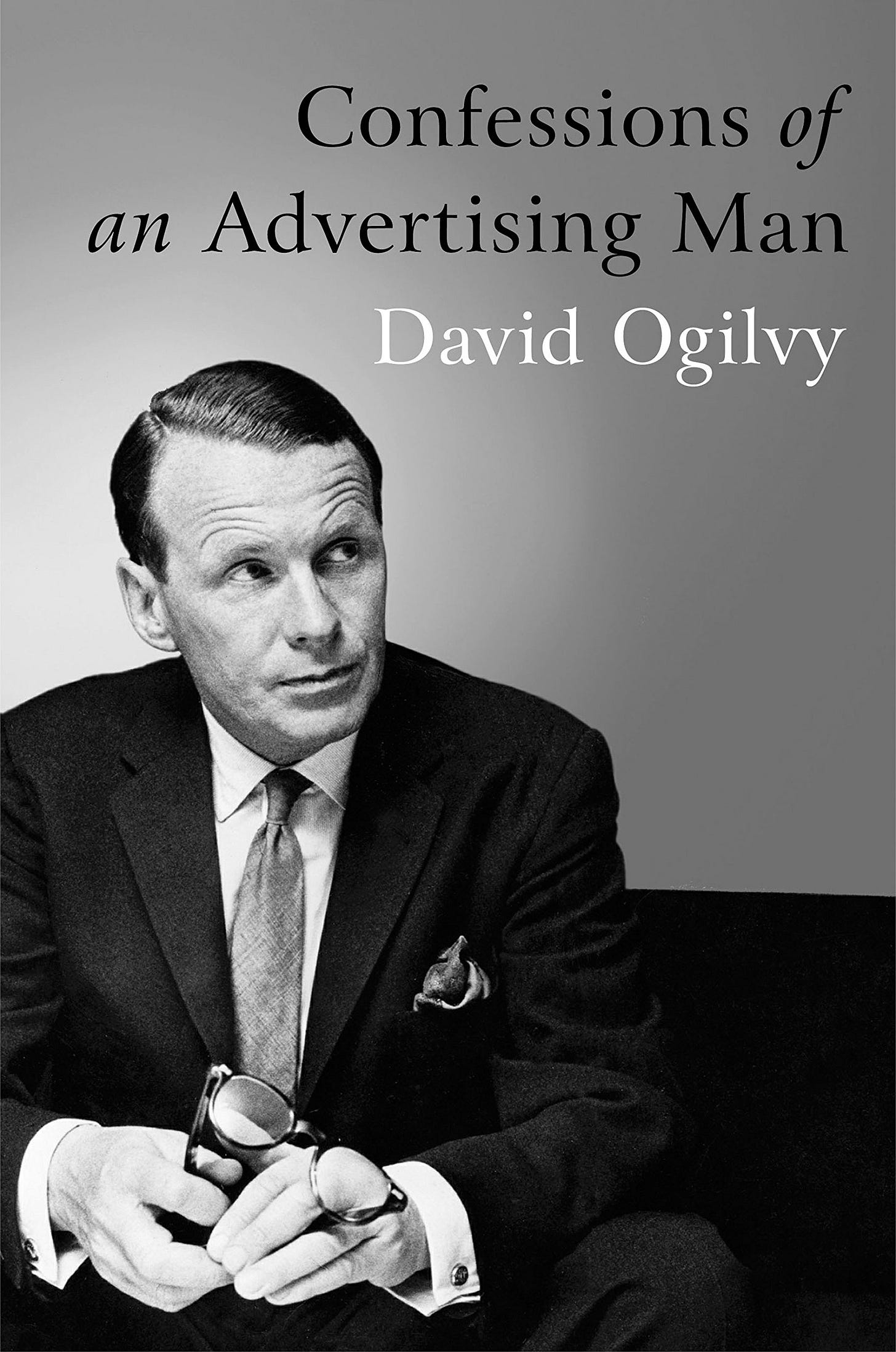📚Book Club - Confessions Of An Advertising Man Part 6
Copywriting, graphic design & human psychology.
It’s Book Club - a weekly post and thread about a book that matters. Let’s do this!
On tap: Week 6 of David Ogilvy’s iconic Confessions of an Advertising Man.
So the fascinating thing about reading a sixty-year-old or so book about how to do good work in the advertising industry is… how little the advertising industry has changed.
I mean, yeah. Digital and OTT and cable television and decline of print. How it’s much easier to be a woman or, well, non-white in the industry in 2021 vs 1963. Much less normalization of alcoholism. A whole lot of other cultural changes.
But the actual output—the process of making advertisements for clients that sell their products, build their brand recognition and enhance the prestige of your agency—hasn’t changed much at all.
Ogilvy, and I mentioned this last time, is a creative first and foremost. He may have run an iconic advertising industry, but his passion was copywriting and selling clients on clever ideas—and it shows. If you’re reading this book for copywriting tips, there’s a ton here. But if you love advertising for visual design, LOL. Good luck.
Anyway, Ogilvy’s a copywriting guy. The TLDR on his viewpoint:
The headline is the “ticket on the meat”
Every headline should appeal to the reader’s self-interest
Use keywords
Remember that 5x people read headline than the body copy
About that last point… Before I went to the dark side and worked in advertising full-time, I was a journalist for years. Working in journalism, you learn how the sausage is made, and here’s the truth about articles in newspapers and magazines:
People read headlines, not articles.
People imagine an article in their head, based on the headline, before they ever read the article.
If you’re lucky, readers read the first few paragraphs of an article. If you’re really lucky, they read it all the way through.
At most media outlets, editors (who are usually not the journalists who actually write an article) come up with a title for the story. At most media outlets, reporters can’t override the headline choice the editor makes.
Headlines are written as often for clicks and emotional manipulation as they are for honesty.
The same holds true for headlines in advertising. The headline is where you tug at the heartstrings, inflate the viewer’s ego, where you associate your product with mom, America and apple pie, with driving at high speed down the autobahn, with any damned thing you want. The rest of the text? Well, it’s just support.
Anyway, on graphic design…. Ogilvy writes about it a bit, but there are two problems:
Like I said, he’s a creative who is in love with writing. Graphic design isn’t something he’s passionate about and it shows.
Copywriting hasn’t changed too much since the 1960s. Graphic design has.
The rise of cheap stock photo services and the democratization of graphic design and video editing that software offers (sorry to get all techno-utopian here! but it’s true!) were the equivalent of massive nuclear bombs that wiped away the 1960s design era where drafting was done by hand, photography editing was analog and complicated and you were creating content largely for billboards, paper and CRT television.
I’m also a writing guy. I’m a writing guy who’s smart enough to know he’s a writing guy, which is why I hire graphic designers and video editors for my client’s projects instead of doing it myself. But as I writing guy, I know how much visuals matter.
In advertising—like in a lot of things—illustrations, photos, video narrative and graphic design are the primary way you tell stories, convey emotions and connect the reader to your copy (and your call to action).
Neglect it at your risk.





